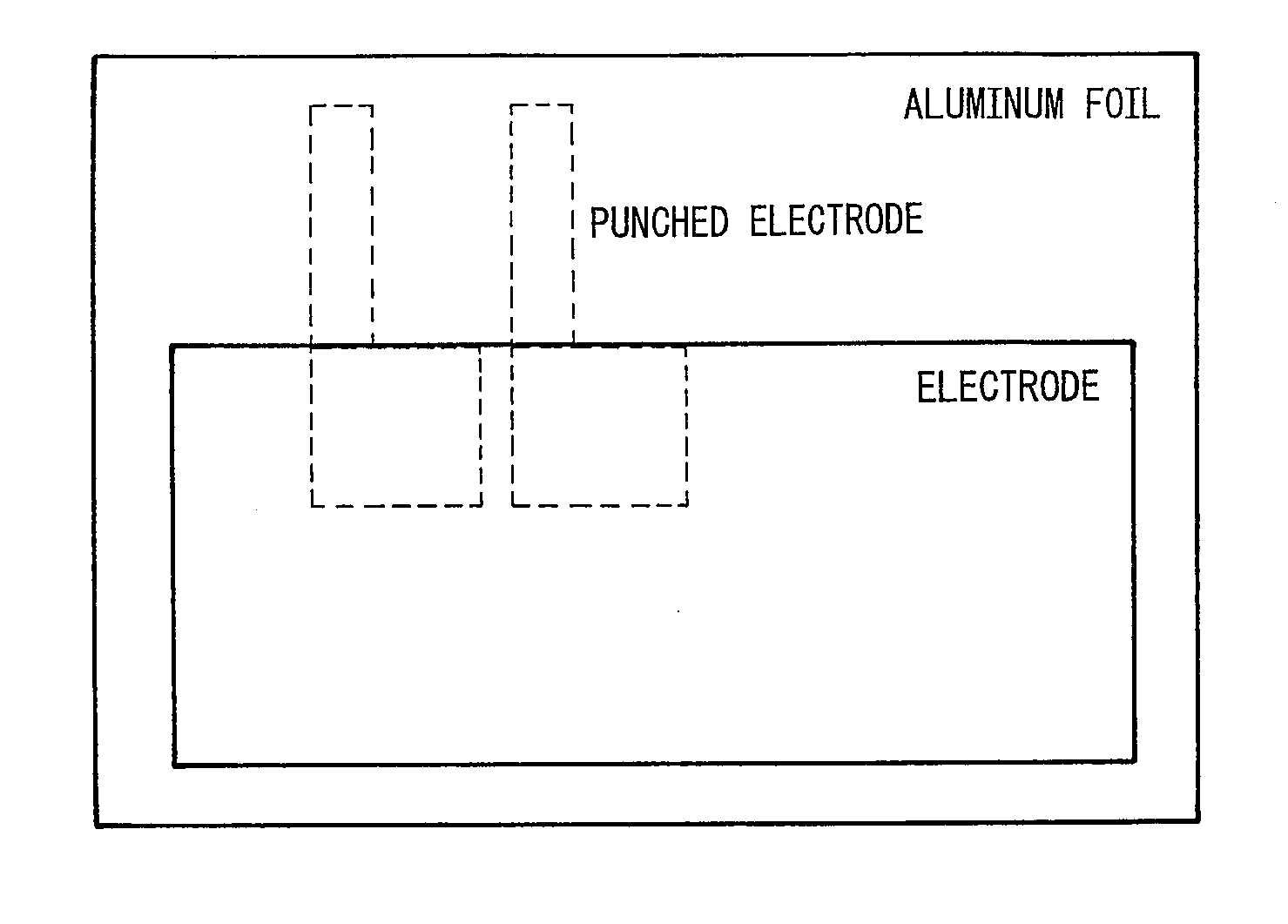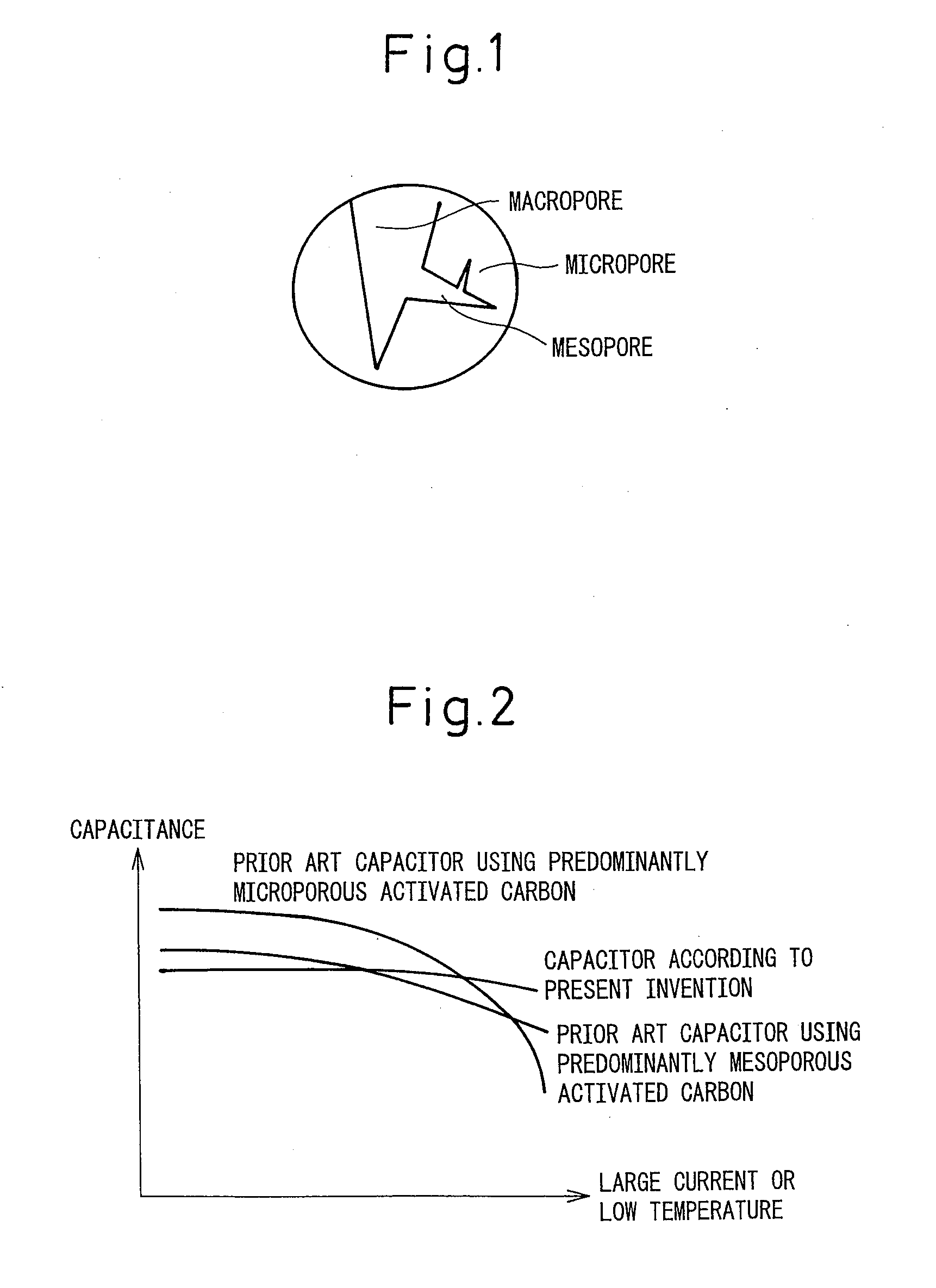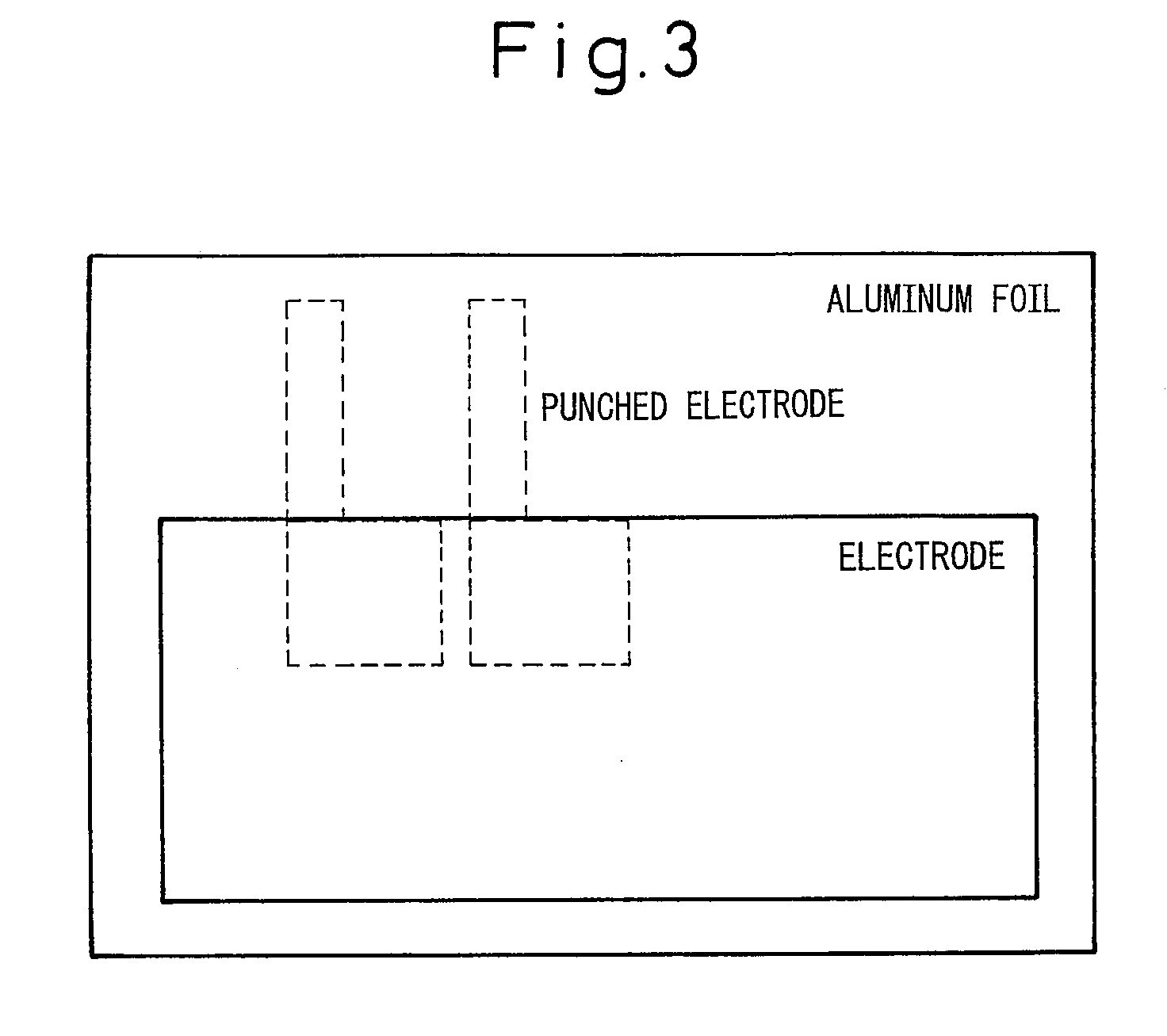Electric Double Layer Capacitor
a double-layer capacitor and capacitor technology, applied in the direction of electrolytic capacitors, electrolytic capacitors, electrolytic capacitors, etc., can solve the problems of reducing the capacitance density, increasing the heat generation, increasing the energy loss, etc., and reducing the durability. , to achieve the effect of enhancing the durability and/or safety of the electric double-layer capacitor suited to such applications, and moldability of the polarized electrode layer
- Summary
- Abstract
- Description
- Claims
- Application Information
AI Technical Summary
Benefits of technology
Problems solved by technology
Method used
Image
Examples
working examples
[0086]The present invention will be described in detail below with reference to working examples.
working example 1
[0087]A coconut shell as a material for activated carbon was heated at 800° C. in an inert atmosphere to obtain a carbonized material, which was then steam-activated for 120 minutes at 900° C. After that, the material was cooled to room temperature, rinsed with water, and dried. The thus produced activated carbon was milled by a jet mill, and the particles were classified to obtain activated carbon having a particle size distribution with a mode diameter of 20 μm (relative particle quantity: 15%) in which 50% of the particles were contained within the range of ±30% of the mode diameter (the range of 14 to 26 μm). The pore volume of the resulting activated carbon was 1.07 cm3 / g, the specific surface area was 2000 m2 / g, and the external specific surface area was 1500 m2 / g.
[0088]30% by mass of ethanol was added to a mixture consisting of 85% by mass of the activated carbon, 5% by mass of Ketjen black powder as a conductive agent (“EC600JD” manufactured by Ketjen Black International Co....
working example 2
[0089]Working example 1 was repeated except that the activation time was 90 minutes, the pore volume was 0.93 cm3 / g, the specific surface area was 1600 m2 / g, and the external specific surface area was 1100 m2 / g. The number of rolling passes required to form the 150-μm thick electrode sheet was two, which was the same as Working example 1. The electrode density of the obtained electrode sheet was 0.52 g / cm3, the external specific surface area per unit volume of the electrode sheet was 486 m2 / cm3, the pore volume of the entire electrode sheet was 0.98 cm3 / g, and the volume based on the inter-particle interstices per unit volume of the electrode sheet was 0.10 cm3 / cm3.
PUM
 Login to View More
Login to View More Abstract
Description
Claims
Application Information
 Login to View More
Login to View More - R&D
- Intellectual Property
- Life Sciences
- Materials
- Tech Scout
- Unparalleled Data Quality
- Higher Quality Content
- 60% Fewer Hallucinations
Browse by: Latest US Patents, China's latest patents, Technical Efficacy Thesaurus, Application Domain, Technology Topic, Popular Technical Reports.
© 2025 PatSnap. All rights reserved.Legal|Privacy policy|Modern Slavery Act Transparency Statement|Sitemap|About US| Contact US: help@patsnap.com



